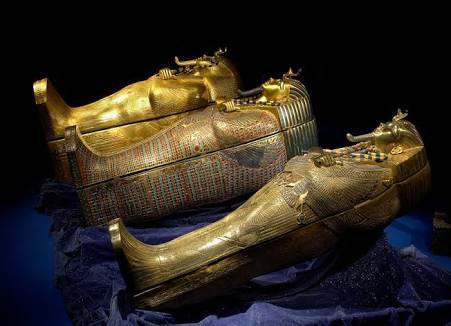In the advanced time, man has lost his capacity to inward vision and cut off his association with a different universe corresponding to our reality dissimilar to the man of antiquated developments who used to consider that to be other world as a supplement to our reality
For elderly folks individuals, demise was the opposite side of life. Demise and life both supplement one another
As per the antiquated Egyptian messages, the spirits of individuals who left our reality consistently went toward the West, where the sun went toward the finish of every day, so the old Egyptian consistently constructed burial grounds on the western bank of the Nile.
Also, there in the west, significant graveyards, for example, Saqqara, the Valley of the Kings, the Queens, the Tombs of the Nobles, and others were raised, some of which were covered under the sand for millennia before the archeologists of the cutting edge time prevailing with regards to finding them.
The revelation by antiquated Egypt of archeologists of old Egypt burial places is an image of the rediscovery of the Western idea of death
For millennia, demise stayed missing from the awareness of the Western individual, and for them it was only a condition of nothingness and destruction, however the issue was diverse in antiquated Egypt. The old Egyptian saw passing in a reality (however an alternate presence)
The universe of the dead in Egyptian idea was a spot brimming with light, bliss, and correspondence where an individual meets those whom he adored in his base daily routine and experiences with them for a long period of time. The other world in antiquated Egypt was where an individual achieves flawlessness.
The writings of the pyramids through writings composed inside the pyramids of Saqqara contain messages that don't manage a dead individual. They are writings that don't discuss passing yet rather talk about existence - life in a different universe - post-existence in another element of presence, maybe the fourth measurement and It is the measurement that physicists as of late found its reality
It likewise depicts the writings of the pyramids the excursion to this covered up/internal measurement, the best approach to arrive at it and what is in it, and how to try not to fall into the snares and risky territories in it
As the book of the two ways depicts the excursion of the spirit in the other world through two ways, one of which is a stream (an image of the Milky Way system waterway in the sky) in which the spirit runs from east to west to the realm of Osir in the west, to the inward sky, to the internal world and afterward re-visitations of go in another manner My territory toward the path from west to east, to the external sky to return, to resurrection. Between the two streets there is a lake known as the Lake of Fire, which eats up the spirits of foes who represent a danger to the parade/excursion of Cosmic Ra.
Also, The Book of the Two Paths is an image of the individual falling into the hover of resurrection (birth, life, demise, and resurrection), and it is an excursion that man strolls on two ways from the clear world to the inward world (from east to west) and the other way around in an excursion that follows the way of the sun
The antiquated Egyptian changed the wonder of death, the fear of the obscure, and the aching forever into a human progress practically identical to its eminence, the stars of the sky, transforming demise into a mystery of innovativeness that rouses the entire world








